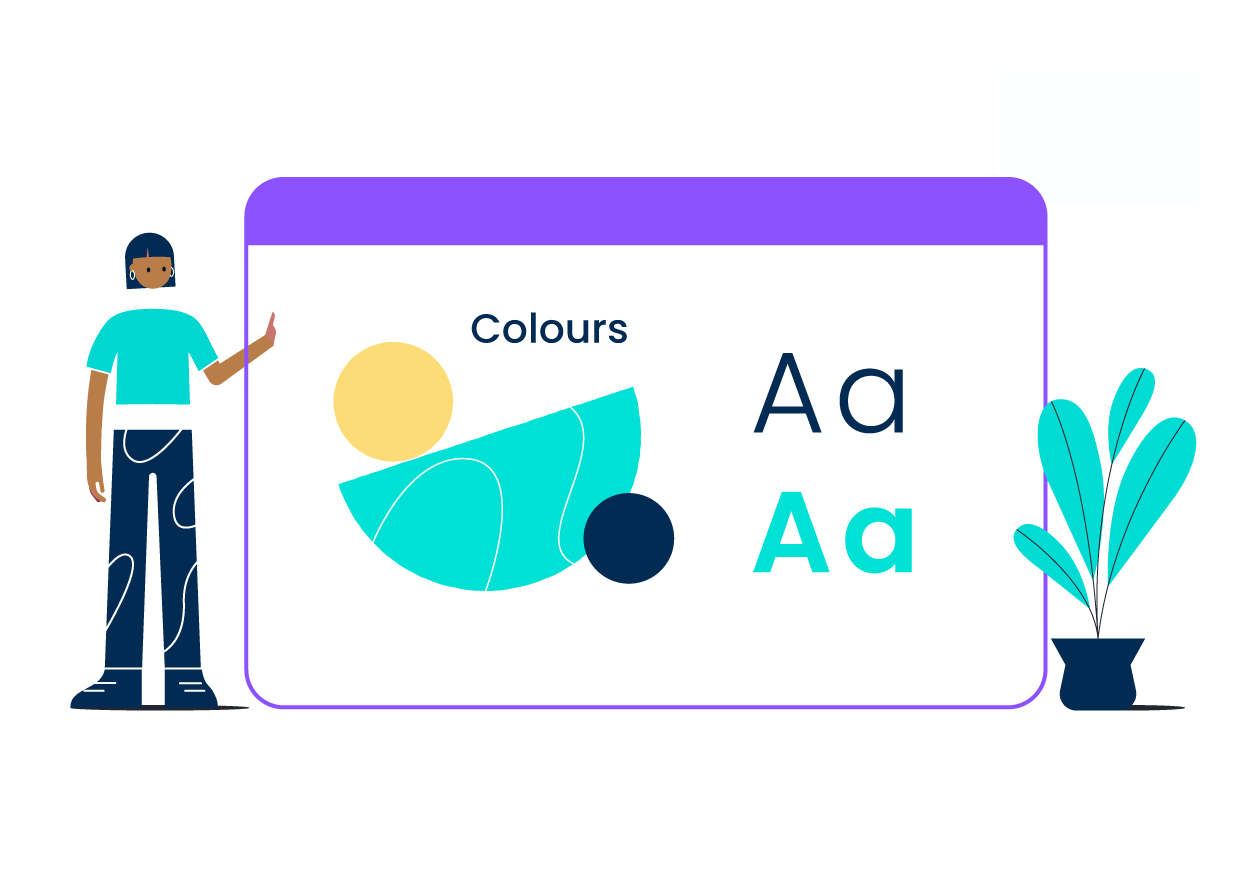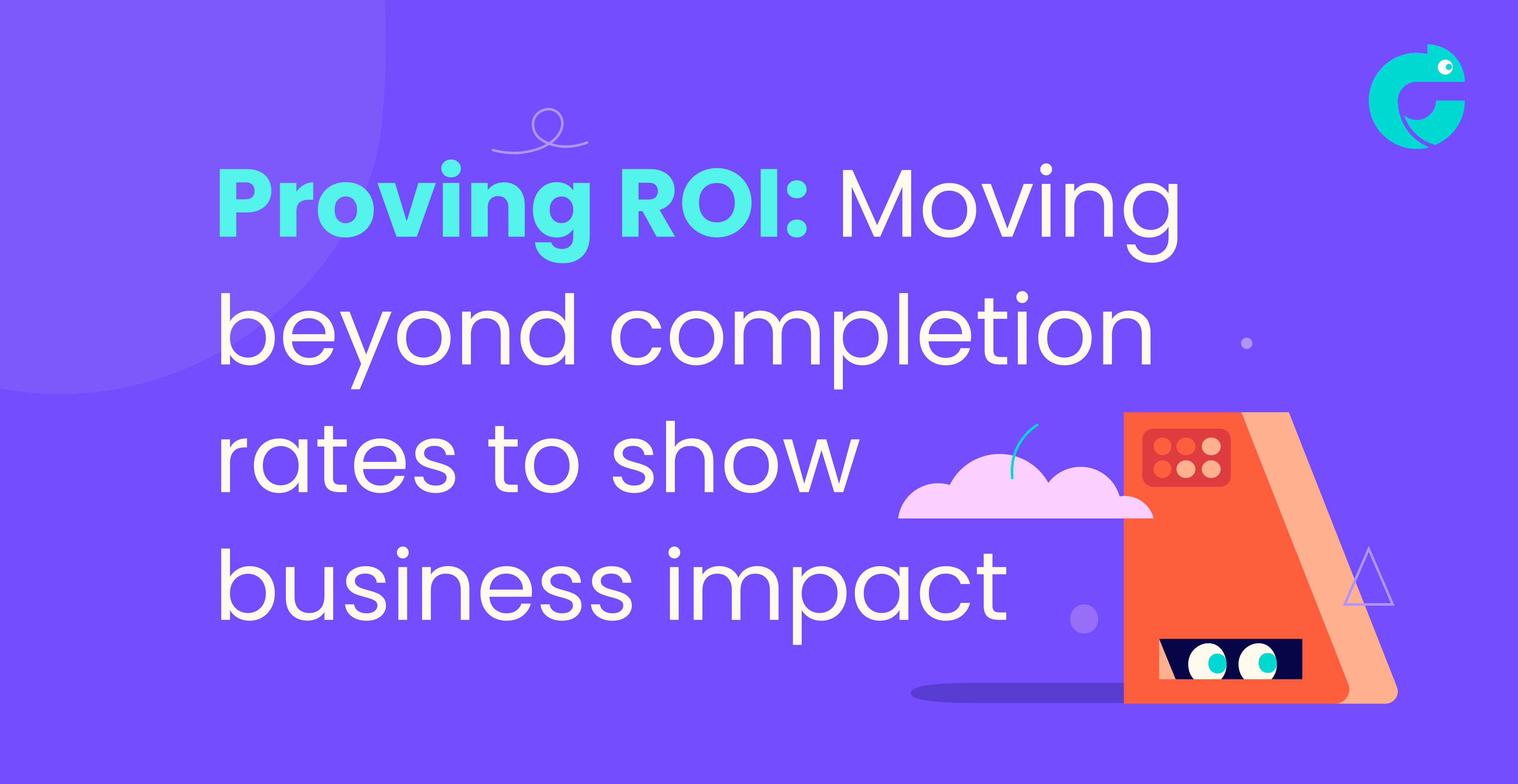The importance of mobile responsive learning
It’s 2024 folks. Why is your learning not mobile responsive?
What’s that you say? Your learning is responsive. That, friend makes you an anomaly in the L&D scene. A magnificent anomaly, much like a unicorn in your rare majesty. You don’t need to read this. Go have some cake and read this or this instead.
Feeling seen and maybe a bit attacked? Or scratching your head, and no idea what we’re banging on about? Read on. This might help.
What’s mobile responsive learning anyway?
So glad you asked. Mobile responsive elearning is learning content that’s been optimised to be enjoyable and easy to consume on any device, anytime, anywhere. Doesn’t matter if you’re at your desk or on a train, learning’s at your fingertips.
Techy geeks just call this responsive learning. But we’re using the term mobile responsive to make it clear we’re talking about the experience of engaging with learning content, rather than learning designed to be responsive to learners’ needs (we hope you’re all over that).
Why does my learning content need to be mobile responsive?
That’s a helluva good question. If you’re making corporate learning, chances are most of the people you’re designing for are working in an office, spending a large chunk of their day bashing away at their laptop or desktop. Why can’t they just do their e-learning there too?
The answer is they can. But they don’t want to.
Fancy some recent stats around mobile usage?
- Globally, mobile market share of internet browsing is 49% and growing year on year.
- In 2020, time spent on mobile devices increased by an average of 31 minutes per US adult, reaching 4 hours and 16 minutes per day.
- In 2021, the number of mobiles operating worldwide was almost 15 billion, up from just over 14 billion in 2020. The number of mobile devices is expected to reach 18.22 billion by 2025.
We’re living in a mobile world. And what this means is people are growing accustomed to consuming content on their mobile. They value the ease, and the flexibility, and they’re not gonna be impressed with content that can’t be consumed on the hoof. And that’s not all.
And then there’s the hybrid working revolution…
One of the side effects of Covid is a massive acceleration in flexible working practices. Some businesses are now operating with 100% remote workforces. Others are trialling a hybrid working model, where people come into the office a few days a week.
In this fluid environment, mobile responsive content is even more important. You can’t guarantee people will be at their desks. You can’t even guarantee they’ll have access to a laptop. But you can be sure their trusty pocket supercomputer won’t be far away.
Why is L&D so late to the mobile revolution?
Poor old L&D’s well on the back foot when it comes to mobile adoption. Every other business unit, from marketing to accounting, became mobile responsive to keep up with how people access content. The big responsive website conversation was ten years ago. You’ve got to put your message where your audience is. It’s effective communication 101.
L&D’s the poor cousin, suffering from lack of investment and lack of innovation. The lack of investment comes down to two things. The first is corporate lack of commitment to learning. Many businesses create learning begrudgingly to meet compliance. They might pay lip service to learning culture rhetoric, but the budget allocated to learning speaks louder than words.
Businesses get away with this lack of investment because learning’s a field where it’s notoriously difficult to demonstrate return on investment. So, it’s tough for L&D pros to swagger into a budget meeting, thwack their success stats on the table, and demand more moolah.
Being under resourced can make people risk averse. With little time and budget to play with new learning platforms, L&D folks tend to stick to what they know. That, coupled with a lack of responsive learning software options, makes L&D tech about a decade out of date.
Why are there so few responsive learning software options?
Another fantastic question. You’re on fire today. Lack of demand from cashed up L&D managers, has led to lack of competition and innovation in the learning software sector.
For many years one e-learning tool has had an almost total market monopoly. That tool is not mobile responsive. It’s difficult to use, takes years to master and creates ho hum learning from an aesthetic POV as well. But that didn’t matter, because for many years there was so little choice, L&D teams had to put up with this tool. It became the industry default, with over 90% of the market. What happens when one player has a monopoly? They become complacent. They stop investing in their platform, and in the fullness of time they get outpaced by innovators.
The good news is that disruption is here. The shift to hybrid working has a seen a surge in investment in e-learning, so companies can upskill remote workforces. As a result, the L&D market has become more attractive, and a number of innovative start-ups are bringing modern digital design principles to learning platforms. Chameleon’s a leader in the field, natch.
Modern problem-solving vs corporate problem-solving
My washing machine broke. Could have called a repair service. They’d have taken a while to send a tradie, and we’d have been without clean socks for days. Or I could figure it out myself.
So, I googled the error code, which told me there was water in the motor. Took the back of the machine off, and sure enough, water everywhere. Googled “how to fix water in washing machine motor?” One YouTube video later I’ve the info I need, I’ve dried out my motor, and I’m washing my stinky socks.
That’s modern problem solving. Accessing answers wherever and whenever you need them, to solve a problem in the moment. In our personal lives, we’ve become used to instantly figuring out solutions with a wealth of responsive content at our fingertips.
But over in our corporate lives, not only is most learning content not accessible on mobile, but we have to watch a 40-minute e-learning module to find out how to do the thing. And we can’t skip to the juicy bit we want because the module’s locked down. It’s an incredibly inefficient way to solve problems and it’s time for corporate e-learning to join the mobile revolution.
The benefits of mobile responsive learning
Responsive content is accessible. When our developers build features in Chameleon, they think about the experience for everyone. They optimise design so your content’s easy to read, and beautiful to engage with. They’re constantly reducing the size of files, so your content loads fast, even in low bandwidth situations. They think about how your content works on every device from a state-of-the-art widescreen monitor, to the most basic, budget smartphone.
Responsive learning gives a competitive edge. If you pit an agile organisation that can find solutions to challenges instantly, against one that can’t, which organisation will perform better?
Responsive learning improves the way organisations work. If all your processes and your vast store of organisational IP is locked away in unresponsive learning systems that can’t be accessed whenever, wherever by someone with a question, you’ve wasted your investment.
Responsive content re-embeds learning. A new manager does a workshop on courageous conversations. A few months later she has to have a tricky discussion with someone on her team. On her commute she calls up an e-learning module and reviews the best ways to handle the conversation. Armed with these tips, she feels confident and handles the situation well. Responsive content gives people a discreet way to upskill and revisit learning just in time.
Responsive design is great for just in time learning. If you’re building learning for people to access whenever they have questions, make it responsive. This becomes even more important if your workers aren’t based at desks. Ports of Auckland use Chameleon for their e-learning so everyone from crane operators to stevedores can access e-learning from their phones.
Designing great mobile responsive learning
We asked our Tech Lead Sam Duke for his tips on making your learning content more mobile responsive. Sam had good news, saying good learning design is responsive by nature.
“If your learning content is concise, you tell memorable stories, use bold visuals, and lead your learner through the content in bite sized chunks, then it’s going to work well in a mobile context. But if you try and cram in too much text, or use very detailed images, it’s going to make for a less satisfying responsive experience.”
Sam’s top tips for responsive learning content:
- Keep content simple, step by step, digestible and succinct.
- Avoid screeds of text and big detailed images.
- Preview your learning content in mobile view, to put yourself in your mobile learner’s shoes.
- Responsive design doesn’t mean you have to make boring ass content. You can still add that desktop design flair with beautiful background images. It doesn’t matter if you can’t see all that detail on mobile, learners will still get the flow of the content fine.
It’s time to join the mobile revolution
The beauty of Chameleon as a learning platform is we’ve done all the responsive design thinking for you. So long as you follow Sam’s simple guidelines you can’t go wrong. We’re here to make responsive learning an easy enjoyable transition for your organisation.
What to read next:
Would you like to know how Chameleon compares to some other popular tools? Check our blog:
Chameleon Creator vs Articulate Rise
Want to learn more about Chameleon Creator? View a demo
In our 10 minute recorded demo, we'll show you how to build and publish your own module.
Share this
You May Also Like
These Related Stories

Applying Learning Experience Design principles to elearning

Proving ROI - Moving Beyond Completion Rates To Prove Business Impact



